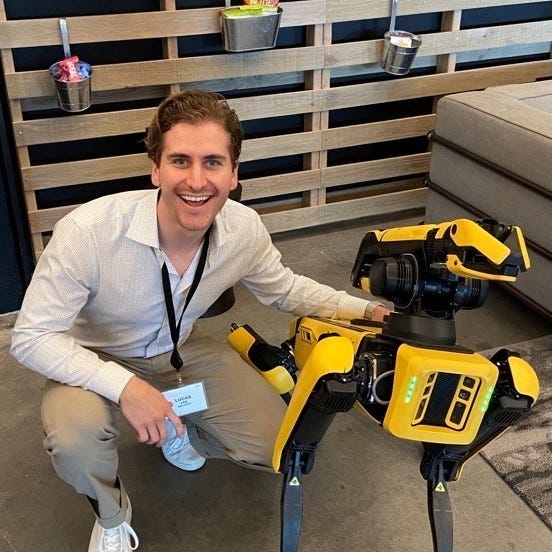The AI factory floor: Why enterprise AI isn’t what you think it is
In 1908, when the first Model T rolled off Ford's assembly line, most business leaders were still betting on faster horses. Today, at the Applied AI New Horizons Summit, with 250 of Deloitte's top AI architects gathered at Deloitte University, I couldn't help but think about those early industrial revolutionaries. The modern architects of Deloitte aren't designing cars or assembly lines, they're building invisible decision-making factories. Unlike traditional factories, these new shops run on tokens instead of steel.
It's a fitting metaphor for where we find ourselves: at the moment when AI transforms from a party trick into an industrial revolution.
1. The Invisible Factory:
"Models are eating the world," one presenter declared. But these aren't the kinds of models you see making headlines. While the majority obsess over chatbots, these architects are building something far more profound: AI which works in the messy real world of enterprise technology, where every organization has their own unique flavor of technical debt. In this room full of PhD-level data scientists, machine learning experts, and software engineers, calling all AI the same thing is like calling cars, planes, and boats all "transportation" – technically true, but missing the point entirely. The real taxonomy of the mechanical minds of the future: different tools for different jobs.
As one expert at the conference put it: in many of our implementations, large language models (LLMs) or chat models are “just the icing on the cake. They add a small layer of personality to the whole thing.” Looking beyond the surface, deep learning models deployed on terabytes of data are the real crux of AI. The prediction and classification capabilities unlock understanding which no organic mind can.
With models, as with humans, it’s a story of “better together” and “better with diversity.” The right ensemble of models makes for more tailored and accurate results.

2. The New Craftspeople:
If traditional software gave knowledge workers hand tools, AI equips them with power tools. We're not just lifting heavier cognitive loads; we're building faster, smarter, and at scale. But this isn't just about power tools - it's about entire workshops of agents. Imagine having an expert carpenter, machinist, and engineer automatically handling the routine work, leaving you to focus on design and innovation.
"We're not eliminating the craftsman, we're eliminating the drudgery," explained one team leader. He’s right. Data scientists who once spent weeks cleaning datasets now orchestrate models that do the redundant work. Developers who used to hand-code basic functions now act more like software architects, letting AI handle the routine coding while they focus on system design. The right tools for the job just became much more powerful.
3. The Three E’s:
There’s still a great deal of risk associated with building AI. That’s why Deloitte’s best and brightest are focusing on responsibility. Many robust frameworks for development and safety exist (e.g. Technology Trust Ethics, Trustworthy AI, AI Governance Model) and they all include some permutation of these three categories: Experiment, Explain, and Evaluate. Each one is just as critical as the next. Skip any one and you might as well be building AI with a blindfold.

Experiment: Build an AI test kitchen
Before you can build tomorrow's AI, you need to upgrade today's foundations. Modern AI requires data architecture that's not just clean, but pristine. As my mentor, Deloitte’s Chief Futurist, Mike Bechtel famously penned: with AI models it’s not just ‘Garbage in, garbage out.’ It’s more like, ‘Garbage in, garbage squared!’
Next, we need to roll up the sleeves. Perhaps the best way Deloitte is helping our teams to experiment is with Deloitte Engineering Platforms. These pre-built development environments help a client-service team to spin-up an AI deployment in record time.
Explain: Mandate transparency
Black-box AI could pose a massive corporate liability, and we don’t need to scroll too far in a CIO’s news feed to see why. Every step of training must be visible - from data lineage to decision paths. Building explainable AI architecture is a critical key to building trust. "If you can't explain it," one architect noted, "you can't deploy it." Transparent AI isn’t just about seeing the code; it’s about building it with glass walls.

Evaluate: Institute quality control
New evaluation tools go beyond simple accuracy metrics. Using open-source frameworks and custom-coded evaluation pipelines, teams are now measuring everything from factual consistency to regulatory compliance. One team demonstrated a "synthetic test suite" that automatically generates thousands of edge cases, and another showed how they're using “AI to evaluate AI.” If models begin to hallucinate or drift from the task at hand, the error will be flagged and swiftly corrected.
The technical conversations at the summit would make most executives' eyes glaze over: RAG systems, ensemble models, and multi-agent orchestration. But beneath the jargon lies a fundamental truth: successful industry-scale AI implementation isn't just about the technology - it's about the process.
In closing…
When I asked Bill Briggs, Global Chief Technology Officer, about the unprecedented nature of this moment, he noted something fascinating: "We haven't seen such an acceleration from tech availability to boardroom topic before... It's the opposite of the typical adoption cycle.” Today, the C-suite isn't waiting for the IT department to make the case for AI - they're eager to know why it isn't already making waves within their business.
History doesn't repeat, but it often rhymes. Just as electrification separated factories into those that modernized and those that disappeared, AI is erasing the status quo and defining the future of competitive advantage for those who build it well. In the age of AI factories, there is no limit to how far curiosity can take us.
- Lucas Erb, NExT Research Lead, Deloitte Consulting LLP




